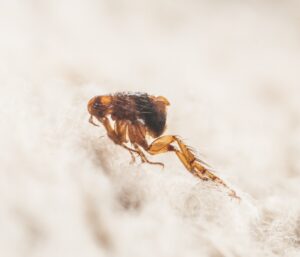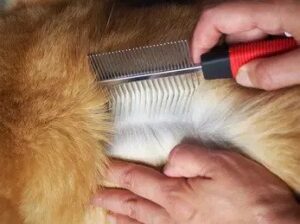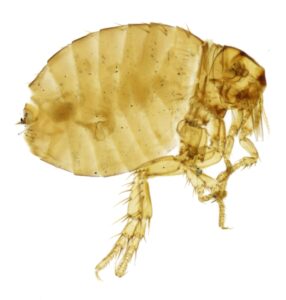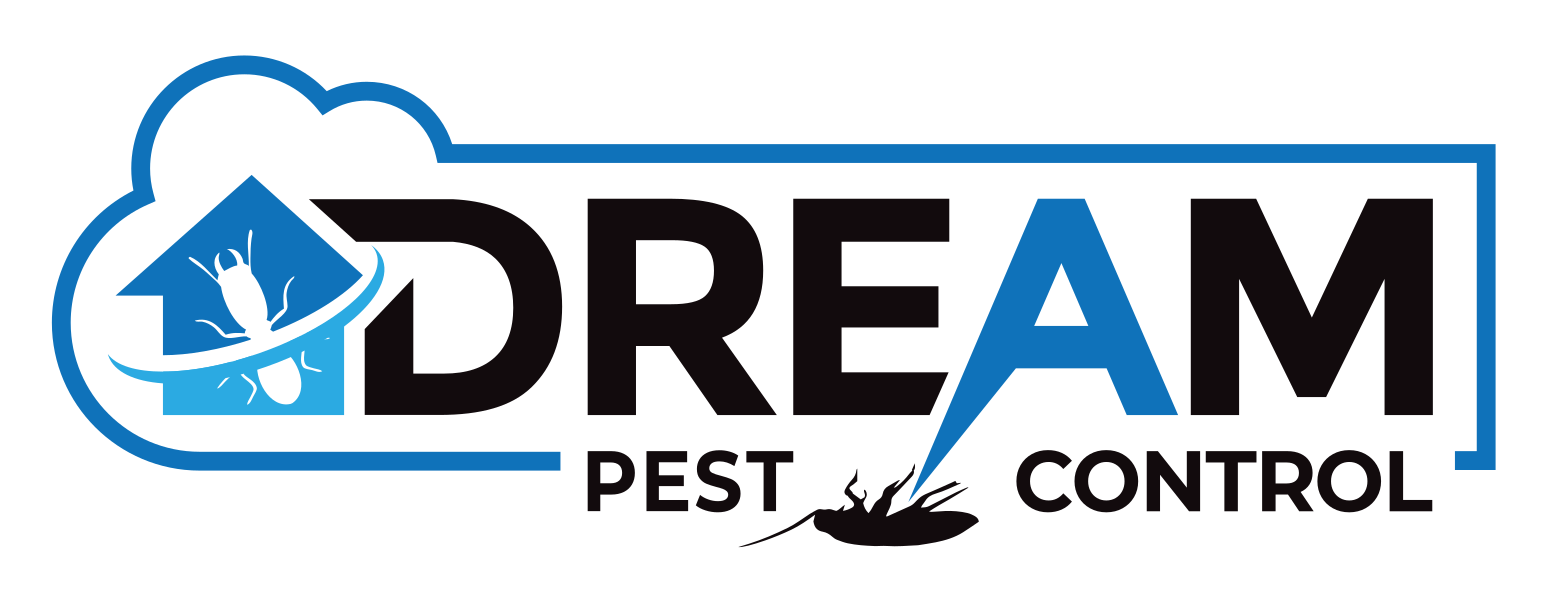At Dream Pest Control, we understand how distressing a flea infestation can be for both you and your pets.
Our specialised flea treatment services in the Gold Coast aim to effectively eradicate these pesky parasites while ensuring the safety of your family and pets. This page provides detailed information about our treatment methods, the benefits of our services, and useful tips on preventing flea infestations in your home.
Is your home or business being invaded by fleas? Don’t wait for the infestation to get worse! Contact us today for a free quote on flea treatment. Our pest control experts at Dream Pest Control are trained and experienced in handling flea infestations, and we’re committed to delivering you safe, effective, and affordable solutions.


Why You Need A Professional Flea Treatment Service?
Fleas are not just a nuisance for your pets, they pose a risk to human health too, and can quickly infest your home. By treating flea infestations early and effectively, you can protect the health of your family and pets, and maintain a comfortable, flea-free home. Dream Pest Control offers comprehensive, safe, and effective flea treatment services to ensure your home or business remains free from these unwelcome pests. Here’s why professional flea control is essential:
- Health Risks: Fleas can transmit diseases such as Murine Typhus and Cat Scratch Disease, and their bites can cause severe itching and allergies in humans and pets. Our professional flea treatment services aim to safeguard your family’s health.
- Rapid Reproduction: Fleas reproduce at an astonishing rate. A small infestation can balloon into a severe problem in no time, making professional intervention crucial.
- Are You a Tenant? Don’t forget that a professional flea treatment may be a stipulation for your end-of-lease agreement, particularly if you’ve had pets. Click the link to learn more about our End of Lease Treatments.
- Experience and Expertise: Our skilled technicians have years of experience handling flea infestations and are trained in the latest pest control techniques. They understand the flea life cycle and know how to effectively eliminate these pests at all stages.
- Effective and Environmentally Friendly Solutions: We use advanced, eco-friendly methods and products to effectively eliminate flea infestations. Our approach ensures the safety of your family, pets, and the environment.
- Customized Plans: At Dream Pest Control, we understand that each infestation is unique. We tailor our flea treatment services to your property’s specific needs and situation.
- Long-term Prevention Strategies: We provide more than just a quick fix. Our technicians will equip you with long-term prevention strategies to help keep your property flea-free in the future.
By choosing Dream Pest Control, you can trust that you’re getting the best in professional flea treatment services. We stand behind our work and are committed to ensuring your home or business remains free from these unwelcome pests.
Do You Have A Flea Infestation?
During a 2019 study, it was found that 28.1% of cats and 14.4% of dogs were flea infested. Flea infestations are not always immediately apparent, but there are several signs that can indicate their presence in your home or on your pets. Here are the key indicators to watch out for:
- Frequent and Persistent Scratching or Biting: If your pets are scratching, biting, or licking themselves more than usual, it might be due to fleas. Fleas are irritating and can cause significant discomfort for your pets.
- Red Patches or Hair Loss on Your Pet’s Skin: Flea bites can lead to skin irritation, resulting in red patches or hair loss. If you notice these symptoms on your pet, it’s possible they have a flea infestation.
- Flea Dirt: Fleas leave behind ‘flea dirt’ or flea feces, which looks like small, dark granules. It’s similar in appearance to ground pepper and is typically found on your pet or in pet beds.
- Flea Eggs: Flea eggs are tiny white specks, usually found in clusters. They can be found in your pet’s fur, your pet’s bedding, or in areas where your pet frequents.
- Sightings of Adult Fleas: Adult fleas are small and fast, making them difficult to spot. However, if you see any jumping or moving on your pet or around your home, it’s a clear sign of an infestation.
If you notice any of these signs, it’s essential to take action immediately. Contact Dream Pest Control for a professional flea treatment to ensure the infestation is thoroughly dealt with.


How to Prevent Fleas?
Preventing a flea infestation is just as important as treating one. Fleas can quickly establish themselves in your home, causing discomfort for your family and pets. The following strategies can help keep your home and pets free from these unwanted parasites:
- Regularly Check and Treat Pets: Pets are often the primary source of a flea infestation. Regularly check your pets for fleas and keep up-to-date with their flea treatments. Comb your pet with a flea comb and watch for signs of discomfort such as excessive scratching or biting.
- Clean Pet Bedding: Fleas can live in your pet’s bedding. Washing your pet’s bedding regularly in hot water can help kill any fleas or eggs.
- Vacuum Frequently: Regular vacuuming can help pick up any fleas or eggs that may be in your carpet, rugs, and upholstery. Don’t forget to vacuum under furniture like couches and beds where fleas can hide. Once you’re done vacuuming, promptly seal the contents of the vacuum bag or canister in a plastic bag. Dispose of this bag outdoors in your wheelie bin to prevent any escaped fleas from re-infesting your home.
- Maintain Your Yard: Fleas often enter homes from an infested yard. Regular mowing, trimming of shrubs, and removal of leaf litter can make your yard less appealing to fleas.
- Professional Pest Control: Even with your best efforts, fleas can still infest your home. Regular professional flea treatments can effectively control flea populations and prevent infestations.
Remember, prevention is the first line of defense in keeping your home flea-free. However, if you suspect a flea infestation, it’s essential to act quickly and contact a professional pest control service like Dream Pest Control.
Common Flea Species in Australia
The Gold Coast is home to several species of fleas, but the most common ones you’ll encounter are the Cat Flea, Dog Flea, and Bird Flea. Understanding the specifics of each species is essential for efficient and effective flea control. Here, we’ll discuss their scientific names, appearances, sizes, life cycles, and typical habitats.

Cat Flea (Ctenocephalides felis)
Appearance: Cat Fleas are small, typically dark brown, and have bodies that are flattened from side to side, a characteristic that helps them move through animal fur or feathers with ease.
Size: They are relatively small and measure approximately 1-2mm in length.
Life Cycle: The life cycle of the Cat Flea comprises four stages: eggs, larvae, pupae, and adults. After a blood meal, female fleas lay white, roundish eggs. These eggs are not sticky and easily drop from the host into the environment, where they hatch into larvae in 1-10 days, depending on temperature and humidity. The larval stage lasts around 5-11 days under optimal conditions, during which they feed on organic debris and adult flea feces. They then spin cocoons and enter the pupal stage. The pupal stage can last from 7 days to several months as the pupae can remain dormant until they sense a host’s presence through vibrations, heat, or carbon dioxide output, which triggers their emergence as adult fleas.
Habits/Habitat: While they are named ‘Cat Fleas,’ they are not exclusive to cats. They can also infest dogs, humans, and other mammals. They prefer to live on the host animal, but can also be found in carpets, pet bedding, and upholstered furniture.

Dog Flea (Ctenocephalides canis)
Appearance: Dog Fleas are very similar in appearance to Cat Fleas. They are dark brown and have bodies that are laterally compressed.
Size: Dog Fleas are slightly larger than Cat Fleas, typically measuring between 2-3mm in length.
Life Cycle: Like the Cat Flea, the Dog Flea has a life cycle consisting of eggs, larvae, pupae, and adults. After feeding, female fleas lay eggs that fall off the host into the environment. These eggs hatch into larvae in 2-12 days, depending on conditions. Larvae feed on organic material and adult flea feces for 4-18 days before entering the pupal stage. This stage can last anywhere from a week to several months, with the pupae laying dormant and only emerging as adult fleas when triggered by signals such as vibrations or exhaled carbon dioxide indicating the presence of a host.
Habits/Habitat: Dog Fleas can infest a variety of hosts including dogs, cats, humans, and other mammals. They prefer to live on the host, but can also infest various areas of a home, particularly where pets rest or sleep.

Bird Flea (Echidnophaga gallinacea)
Appearance: Bird Fleas are typically light brown to reddish brown. They have a more rounded shape compared to the Cat and Dog Fleas.
Size: Bird Fleas are about the same size as Dog Fleas, usually measuring between 2-3mm in length.
Life Cycle: Bird Fleas also undergo the four stages of life: eggs, larvae, pupae, and adults. After a blood meal, females lay eggs that hatch into larvae within 2-14 days, depending on the environmental conditions. The larvae feed on organic debris and adult flea feces, progressing to the pupal stage after 1-2 weeks. The pupal stage is particularly resilient and can last from one week to several months. The emergence of adults from this stage is triggered by the presence of a host, detected by vibrations, warmth, or carbon dioxide levels.
Habits/Habitat: As their name suggests, Bird Fleas predominantly infest birds. However, they can bite humans and other mammals when birds are not available. They are often found in bird nests or in homes where birds have nested.





